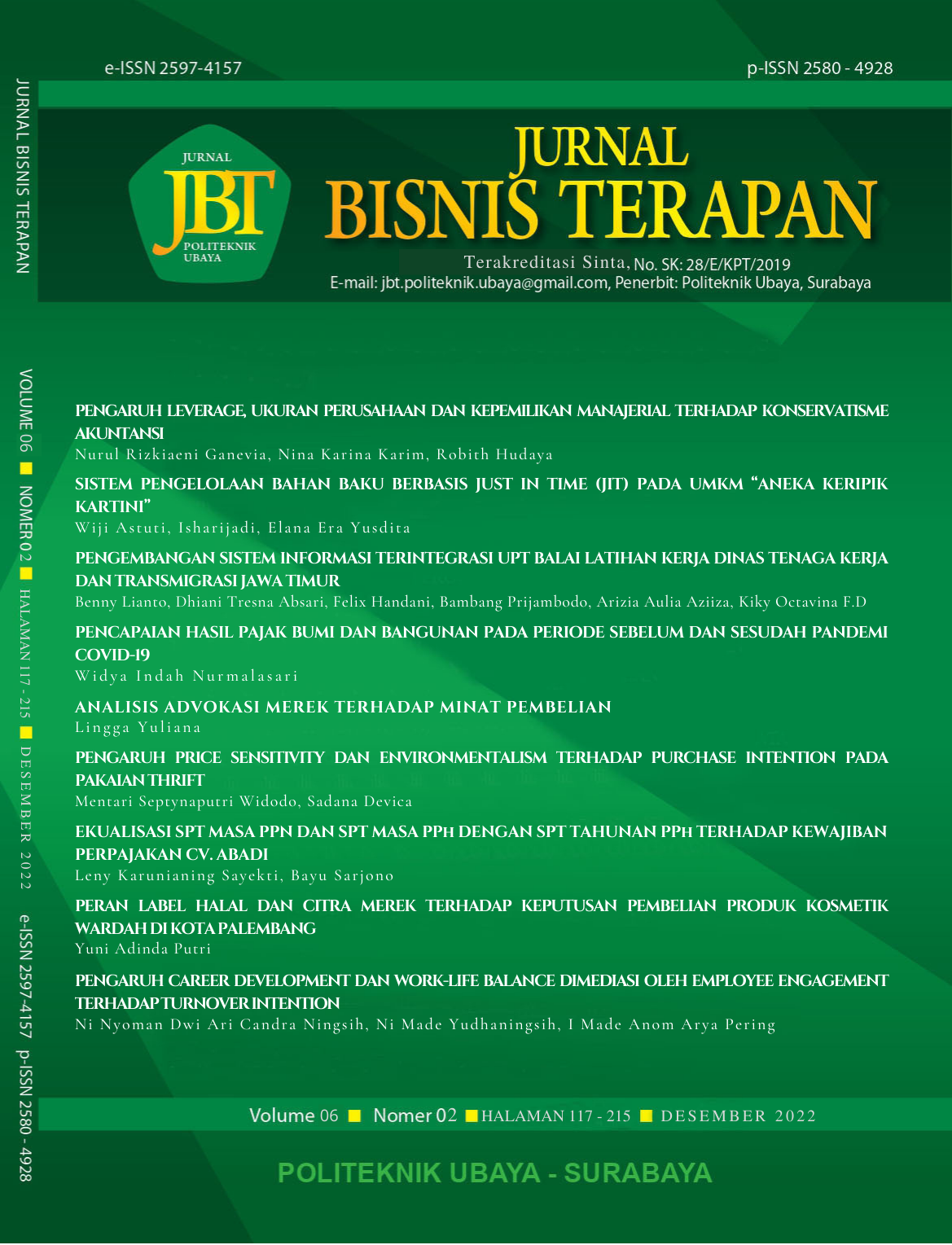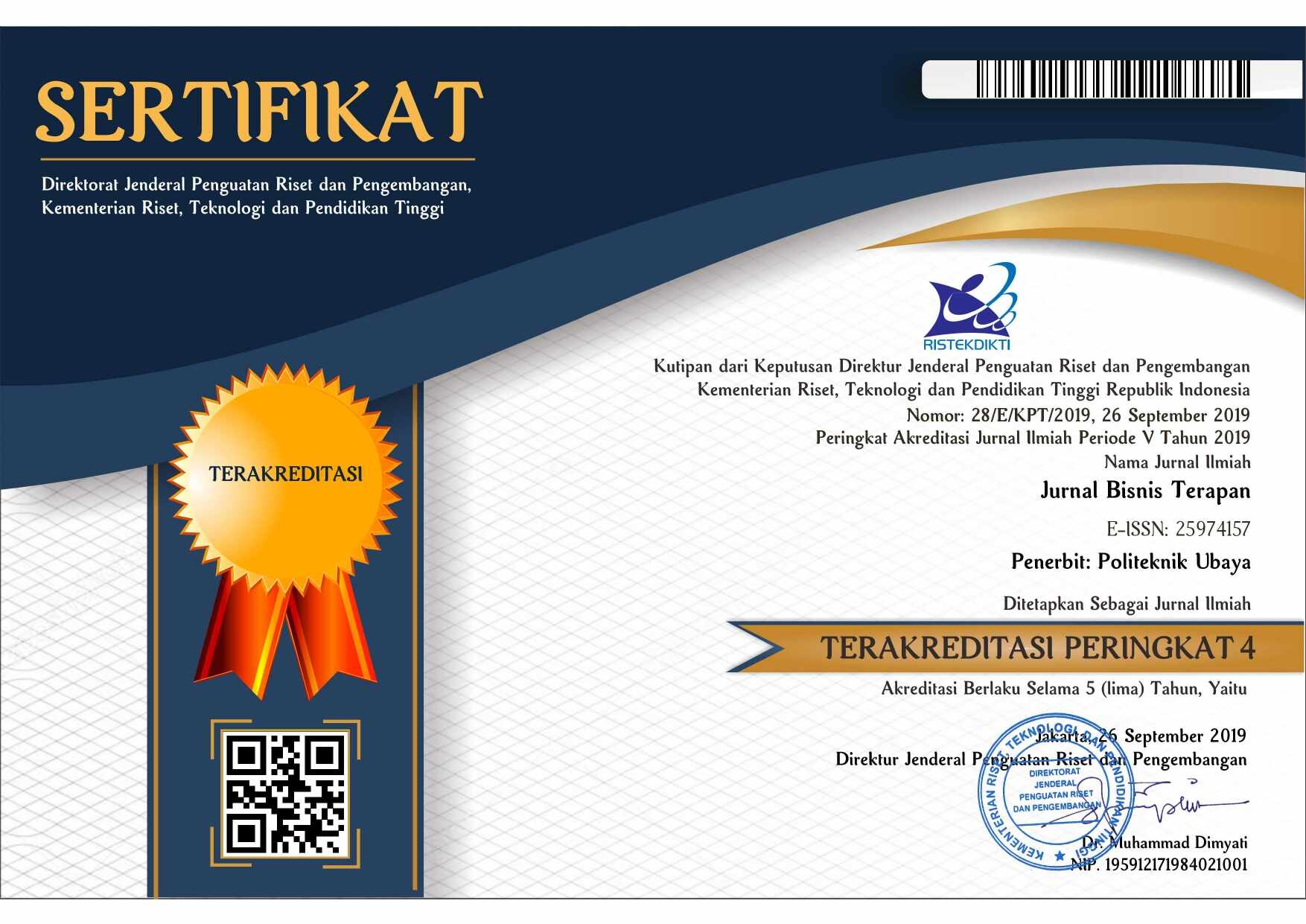PENCAPAIAN HASIL PAJAK BUMI DAN BANGUNAN PADA PERIODE SEBELUM DAN SESUDAH PANDEMI COVID-19
 Abstract Views:
332 times
Abstract Views:
332 times
 PDF Downloads:
236 times
PDF Downloads:
236 times
Abstract
Abstract
The corona virus or Covid-19 pandemic had a major impact on the global economy, including the taxation sector. One of the taxes that has decreased is the land tax and where tax revenue data shows a decrease in the realization of land and building tax revenues. This study aims to find out how to find out the results of taxes and buildings in the period before and before pandemic covid-19. This research used quantitative research. This study used secondary data obtained by documentation studies. The data analysis technique used was paired t-test analysis. The results in this study indicate that there are differences in the results of Land and Building Taxes before and after pandemic covid-19. This shows that the Pandemic COVID-19 can affect taxpayer compliance in paying taxes, which affects the achievement of land and building tax results.
Downloads
References
Alabede, J. O., & Affrin, Z. Z. (2011). Tax service quality and compliance behaviour in Nigeria: Do taxpayer’s financial condition and risk preference play any moderating role? European Journal of Economics, Finance and Administrative Sciences, 35, 90–108.
Ames, D., S. Hines, C., & Sankara, J. (2014). Are earnings quality attributes reflected in financial strength ratings? American Journal of Business, 29(3/4), 293–311. https://doi.org/10.1108/AJB-12-2013-0073
Babawale, G. K. (2013). Designing appropriate valuation model for sustainable property tax system in developing countries. International Journal of Law and Management, 55(3), 226–246. https://doi.org/10.1108/17542431311327646
Bahl, R. W., & Linn, J. F. (2014). Delivering and financing public services in metropolitan areas. In Handbook of Multilevel Finance (pp. 334–357). Edward Elgar Publishing. https://doi.org/10.4337/9780857932297.00020
Creswell, J. W., & Creswell, J. D. (2017). Research Design: Qualitative, Quantitative, and Mixed Methods Approaches (5th ed.). Sage Publications, Inc.
Donovan, D., & Amanah, L. (2015). Strategi Pemungutan PBB sebagai Upaya Meningkatkan Pendapatan Asli Daerah di Kota Mojokerto. Jurnal Ilmu Dan Riset Akuntansi, 4(11), 2015.
Fachrudin, K. A., Siahaan, E., & Pane, I. F. (2018). Challenges and Strategies in Increasing Property Tax Revenue in Medan City, Indonesia. Proceedings of the International Conference of Science, Technology, Engineering, Environmental and Ramification Researches, Icosteerr 2018, 1405–1408. https://doi.org/10.5220/0010078014051408
Kainde, V., Warouw, D. M. D., & Paputungan, R. (2015). Anggapan Masyarakat Wajib Pajak Kelurahan Pakowa Terhadap Iklan Pajak yang di Tayangkan di Siaran Televisi Trans 7. Acta Diurna, 4(5), 1–9.
Mardiasmo. (2018). Perpajakan (19th ed.). Andi.
Rahayu, S., & Lingga, I. S. (2009). Pengaruh Modernisasi Sistem Administrasi Perpajakan Terhadap Kepatuhan Wajib Pajak (Survei Atas Wajib Pajak Badan Pada KPP Pratama Bandung ”X”). Jurnal Akuntansi, 1(2), 119–138. https://doi.org/10.28932/jam.v1i2.375
Sekaran, U., & Bougie, R. (2016). Research Methods for Business: A skill Building Approach (7th (ed.)). John Wiley & Sons, Inc.
Suandy, E. (2016). Hukum Pajak (7th ed.). Salemba Empat.
Sugiyono. (2016). Metode Penelitian Kuantitatif Kualitataif dan Kombinasi (Mixed. Methods). Alfabeta.
Suhendri, H., Iriani, N. I., & Tanggu, E. A. (2021). Kepatuhan Wajib Pajak Umkm Di Masa Sebelum Dan Saat. Referensi: Jurnal Ilmu Manajemen Dan Akutansi, 9(1), 63–68.
Waluyo. (2017). Perpajakan Indonesia (12th ed.). Salemba Empat.
Wood, G., Ong, R., & Winter, I. (2012). Stamp duties, land tax and housing affordability: The case for reform. Australian Tax Forum, 27(2), 331–349. https://doi.org/10.3316/agispt.20180917001848


This work is licensed under a Creative Commons Attribution-NonCommercial-ShareAlike 4.0 International License.

Ciptaan disebarluaskan di bawah Lisensi Creative Commons Atribusi-NonKomersial-BerbagiSerupa 4.0 Internasional.
-
Articles published in Jurnal Bisnis Terapan are licensed under a Creative Commons Attribution-NonCommercial-ShareAlike 4.0 International (CC BY-NC-SA 4.0) license, which permits anyone to copy, transform, or redistribute articles for any lawful purpose in any medium, provided appropriate credit is given to the original author(s) and Jurnal Bisnis Terapan is recognized as its original publisher. A link to this license should also be provided. Any derivative work of an article published in Jurnal Bisnis Terapan must also be shared under the same (or compatible) license.
-
Both copyright and publishing rights on articles are retained by the respective author(s), without restrictions. Only a non-exclusive license is granted to Jurnal Bisnis Terapan to publish the article and identify itself as its original publisher.

 DOI:
DOI:






